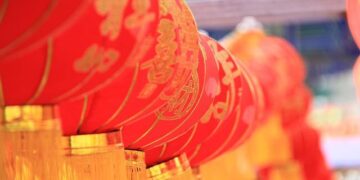Global Efforts Intensify to Ease China’s Export Restrictions on Rare Earth Magnets
In a critical juncture for worldwide supply chains, international diplomats and top automotive manufacturers are ramping up their initiatives to convince Beijing to relax its stringent export limitations on rare earth magnets. These magnets are indispensable in a wide array of advanced technologies, notably electric vehicles (EVs) and renewable energy systems. With the accelerating global shift toward green energy solutions, the escalating demand for these essential materials has sparked growing apprehension that China’s restrictive policies could obstruct innovation and disrupt manufacturing across multiple sectors. As negotiations progress, industry stakeholders remain vigilant about Beijing’s stance, recognizing that the outcome may significantly alter global trade dynamics and the trajectory of sustainable technology development.
Automakers Amplify Diplomatic Appeals Amid Rising EV Market Competition
The fiercely competitive electric vehicle market—projected to grow at an annual rate exceeding 20% through 2030—has prompted automakers to intensify their appeals for China to ease export controls on rare earth magnets vital for EV motors. Industry leaders argue that these restrictions not only inflate production costs but also jeopardize supply chain stability crucial for clean technology advancement. The mounting diplomatic pressure underscores calls for fairer trade practices that support innovation while ensuring steady growth within this rapidly evolving sector.
Government representatives from several countries have engaged directly with Chinese officials, focusing discussions on key concerns:
- Escalating Production Expenses: Export constraints have driven magnet prices upward by over 30% in recent months, challenging manufacturers’ competitiveness globally.
- Supply Chain Vulnerabilities: Restricted access threatens timely development of cutting-edge technologies across industries such as consumer electronics and aerospace.
- Sustainability Risks: Trade barriers may inadvertently encourage reliance on environmentally damaging alternatives or less regulated sources.
The dialogue reflects a delicate balancing act between protecting national interests and fostering international cooperation. Stakeholders remain optimistic that constructive engagement with Chinese authorities will lead to more accommodating policies conducive to sustainable industrial growth worldwide.
The Broader Economic Impact: How Export Controls Ripple Through Global Industries
The concerted push by diplomats and automakers highlights how deeply intertwined global supply chains are with rare earth magnet availability. As countries pursue technological autonomy amid geopolitical uncertainties, export restrictions present immediate challenges affecting cost structures and operational continuity across diverse sectors reliant on these materials.
Tightened supplies compel companies either to seek alternative sources—which often come at premium prices—or face production delays impacting profitability. This scenario poses significant risks particularly in industries like renewable energy infrastructure where wind turbines depend heavily on neodymium-iron-boron magnets derived from rare earth elements.
Beyond direct economic effects, inflationary pressures may mount as scarcity drives up component costs throughout manufacturing ecosystems globally. Additionally, geopolitical tensions could escalate as nations reassess dependencies; some firms might relocate production closer to raw material suppliers or diversify sourcing strategies altogether—potentially reshaping established trade routes over time.
Navigating Challenges: Strategic Approaches for Policymakers & Industry Leaders
Tackling the complexities posed by rare earth magnet export restrictions requires coordinated action among governments and private sector players alike. Prioritizing investment in research aimed at developing substitute materials or enhancing recycling methods is paramount; breakthroughs here can reduce reliance on constrained imports while promoting circular economy principles.
Public-private partnerships offer promising avenues toward bolstering domestic extraction capabilities responsibly while fostering innovation ecosystems around alternative technologies such as ferrite-based magnets or advanced composites currently under exploration by leading laboratories worldwide.
Cultivating robust international alliances is equally critical—diversifying supply networks enhances resilience against future disruptions caused by political shifts or resource nationalism trends prevalent today. Collaborative frameworks can facilitate knowledge exchange regarding sustainable mining practices ensuring environmental stewardship remains integral throughout sourcing operations. Transparency initiatives further reinforce accountability within complex supply chains increasingly scrutinized by consumers demanding ethical standards.
| Strategic Initiative | Main Participants | Aimed Benefits |
|---|---|---|
| Boost Funding for R&D Programs | Governments & Corporations | Pioneering alternatives reducing import dependency |
| Create Multinational Partnerships | Nations & Industry Leaders | Diversified & resilient material supplies |
| Enforce Sustainable Sourcing Regulations | Lawmaking Bodies | Ecosystem-friendly procurement standards |
A Path Forward: Balancing National Interests with Global Sustainability Goals
The ongoing dialogues between diplomatic envoys and automotive executives underscore an urgent need for Beijing’s reconsideration of its current export policies concerning rare earth magnets amid surging global demand fueled largely by green technology adoption trends projected through mid-decade forecasts. Striking equilibrium between safeguarding sovereign priorities while enabling open commerce remains pivotal—not only impacting manufacturers but also shaping broader technological progressions tied closely with sustainability imperatives.
As stakeholders await China’s forthcoming decisions carefully watched worldwide—the resolution reached will likely redefine market dynamics surrounding critical minerals essential not just today but well into future decades where clean energy solutions dominate industrial landscapes.
Ultimately collaboration stands out as indispensable; aligning economic objectives alongside environmental responsibility offers best prospects toward securing stable access without compromising planetary health nor innovation momentum necessary during this transformative era.














